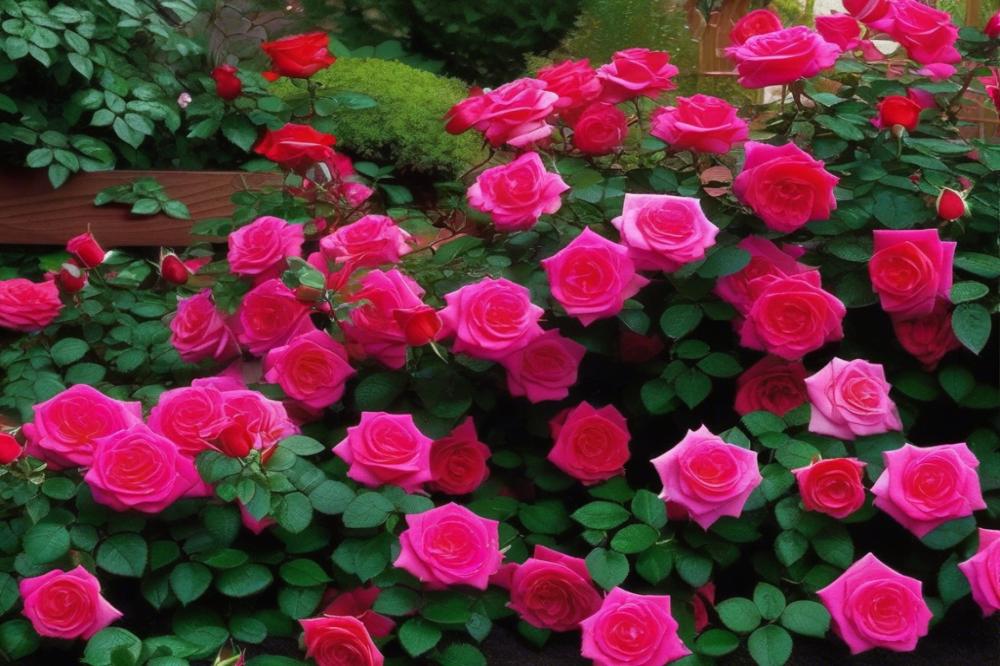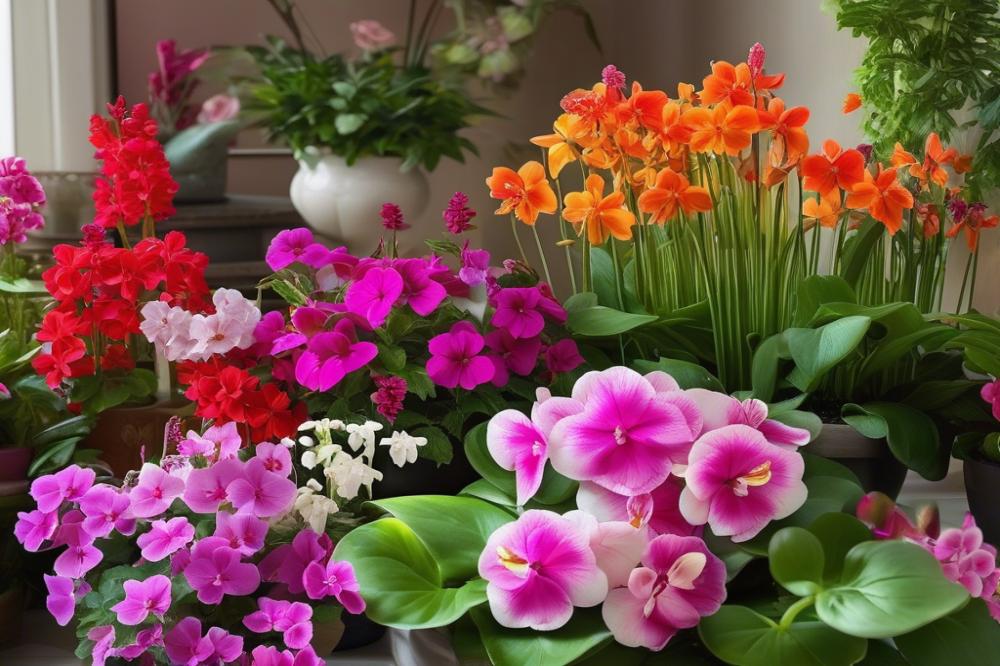How to Grow miniature roses in Small Spaces
miniature roses are charming little plants that can brighten any area. Their small size and vibrant blooms make them perfect for those who lack extensive garden space. These lovely flowers bring cheer and color, even to the smallest of balconies or indoor corners. With so many options for colors and styles, people find them appealing for any setting.
Not everyone has a yard, but many can enjoy beautiful blooms. small space gardening allows everyone to create a patch of nature without overwhelming their living area. Whether living in an apartment or just wanting to use a small patio effectively, growing these compact flowers is a rewarding activity. They require less room and can be cultivated in containers, making them ideal for urban gardeners.
Flowering plants enhance any environment. Their beauty can lift spirits and create a sense of calm. Miniature roses provide benefits beyond their appearance; they can improve air quality in indoor spaces as well. Engaging in plant maintenance fosters a sense of accomplishment, as each bloom is a reflection of the care given. Simple activities, such as pruning roses, can lead to lush, vibrant plants that thrill the senses.
Understanding soil requirements and sunlight needs is crucial for success. Many people may think that beautiful gardens require a vast expanse of land. However, container gardening opens new possibilities. With proper attention and planning, anyone can include these lovely gems in their garden design. Small yet stunning, miniature roses are a valuable addition to any plant lover’s collection.
Understanding Miniature Roses

Miniature roses are small, charming plants known for their compact size and vibrant blooms. These flowering plants typically grow to about 1 to 2 feet tall. Their petite stature makes them perfect for garden design in tight spaces. They come in various colors and fragrances, making them a delightful addition to any small area.
Different Varieties of Miniature Roses Suitable for Small Spaces
Many varieties excel in small spaces. The “Baby Boomer” features multiple buds on a single stem and has striking red flowers. Another popular choice is “Dwarf Meidiland,” with its abundant pink blooms and strong resistance to disease. For those who prefer softer hues, the “Sylvia” variety showcases delicate white petals. These selections thrive in container gardening, enhancing the beauty of balconies and patios.
Comparison with Standard Roses
Standard roses are usually much larger, often reaching several feet in height. This size difference demands more space and can complicate care routines. Miniatures require less maintenance, making them ideal for novice gardeners. While both types benefit from similar soil requirements and sunlight needs, miniature varieties are perfect choices for indoor plants or limited outdoor spaces.
When it comes to rose care, miniature roses often require less pruning than their larger counterparts. Pruning roses can be a complex task, but with smaller plants, it’s simpler to manage. Their compact size also means they can be grouped together, creating stunning displays without overwhelming your space.
Balcony gardening becomes easier with these petite beauties. They fit comfortably in pots or even hanging baskets. Plant maintenance remains straightforward, allowing you to enjoy their blooms without excessive hassle. Overall, miniature roses provide a unique opportunity to add color and elegance to small spaces.
Container Gardening for Miniature Roses

Choosing the Right Pots and Containers for Miniature Roses
When selecting containers, size and material matter. Clay pots absorb moisture quickly, while plastic retains it longer. Choose a pot that is at least 6 to 8 inches deep. This gives roots space to grow. Drainage holes are essential. Without them, water can pool and drown the roots. Go for decorative pots that enhance your balcony gardening design. They can turn any small space into a blooming oasis.
Best Potting Soil and Soil Requirements
High-quality potting soil is a must. Look for a mix that drains well but retains enough moisture. Roses prefer slightly acidic to neutral soil. A pH between 6.0 and 7.0 works best. You can add compost to enrich the soil. This improves nutrients while helping with drainage. Always check the soil’s water retention. Soil can dry out faster in pots than in the ground.
Tips for Container Gardening to Maximize Space and Growth
Position your plants where they’ll get plenty of sunlight. Most flowering plants require at least 6 hours of direct sunlight daily. If growing indoors, a south-facing window is ideal. Regular watering is key. Check the soil moisture frequently; it should be damp but not soggy. Pruning roses regularly encourages new growth and blooms. Trim dead or wilted leaves to keep plants healthy. Balance is crucial in plant maintenance; avoid over-fertilizing, as this can harm your roses. Explore different containers, such as stacked pots, to save space. Create a visually appealing garden design with varying heights and colors. Your small space can be transformed into a vibrant display of beauty.
Sunlight Needs and Location

Identifying the ideal sunlight conditions for miniature roses is key to their growth. These plants thrive in bright light. Ideally, they need around six hours of direct sunlight each day. Insufficient light can lead to poor blooming and weak growth.
For those practicing container gardening, placement options matter significantly. If you have indoor plants, consider a south-facing window. This positioning offers the most light. For balcony gardening, placing pots on the ledge where they can soak in sunlight is wise. Remember that some spots may have more shade. Observing these areas through the day can help find the best location.
How Sunlight Affects Blooming and Overall Plant Health
Sunlight affects blooming directly. A well-placed plant will produce more flowers than one in the shade. This occurrence is due to the processes of photosynthesis and energy absorption. Healthy plants, on the other hand, also require good rose care practices—proper watering and feeding enhance growth further.
During the growing season, adequate light also encourages robust foliage. Healthy leaves contribute to overall plant vitality. Don’t forget about soil requirements either; proper soil helps in moisture retention and nutrient absorption.
Some varieties of flowering plants can adapt to lower light, but true beauty comes from ample sunshine. Proper orientation in your garden design promotes an environment where roses can flourish. Consider using reflective surfaces to increase light exposure. This technique can benefit indoor plants as well.
Lastly, plant maintenance is crucial. Regularly check for any signs of stress in your left plants. If you notice leggy growth, it likely needs more sunlight. Pruning roses will also encourage bushier growth, making the best use of available light.
Rose Care and Maintenance

Basic Rose Care Practices for Miniature Varieties
Taking care of these lovely plants requires attention and love. Start by choosing the right spot. They thrive in places where they can soak up sunlight. Most miniature roses need around six hours of direct light daily. Pay close attention to the condition of the leaves. Yellowing leaves may indicate problems, like insufficient water or pests. When watering, it’s best to do it in the morning. This helps prevent fungal diseases that can harm your plants. Always check the soil first. Water only if the top inch feels dry to the touch.
Watering Requirements and Plant Maintenance Tips
Containers can dry out quickly, so vigilance with watering is critical. Use pots with drainage holes to prevent waterlogging. Too much water can cause root rot, a common issue in rose care. Focus on good drainage and monitor moisture levels closely. When irrigating, water the base, not the leaves. Keeping foliage dry reduces the chance of disease. Additionally, consider misting the leaves occasionally. This can increase humidity for indoor plants.
Pruning roses also plays a vital role in maintaining health. Shape the plants during springtime to encourage growth. Remove dead or diseased branches to promote air circulation. A well-pruned rose not only looks appealing but also produces more flowers. Remember to always use sharp, clean tools to make clean cuts. This reduces the chance of getting infections that harm the plant.
Fertilization Schedules and Nutrients for Healthy Growth
Finding the right balance of nutrients is essential. Use a balanced fertilizer designed for flowering plants. Apply it every four to six weeks during the growing season. Follow the instructions on the packaging closely. Over-fertilizing can damage the plants more than help them. Focus on keeping an eye on the growth and leaves. If the leaves are dark green, they likely get enough nutrition.
Organic options, like compost or well-rotted manure, also benefit the plants significantly. Incorporating these into the soil provides essential nutrients. Just remember to mix well to avoid burning the roots. Garden design can enhance the beauty of your balcony gardening. Consider companion planting with herbs or other flowers. This improves the overall health of your miniature roses while adding color and fragrance.
Pruning Miniature Roses
Importance of Pruning for Air Circulation and Blooming
Pruning is essential for the health of your miniature roses. It helps prevent diseases by improving air circulation among the leaves. When there is good airflow, flowers have a better chance to thrive. A well-pruned plant produces larger blooms, enhancing your garden design. Plus, removing dead or damaged stems encourages new growth, leading to more beautiful blossoms.
Step-by-Step Guide on How to Prune Miniature Roses
Start with sharp, clean pruning shears. This prevents the spread of bacteria. Examine your plants closely before cutting. Look for any damaged branches or spent flowers. Trim these away to promote healthy growth. Aim to shape the bush, allowing sunlight to reach the center. Always cut at an angle just above a leaf node. This technique encourages new stems to sprout. After proper trimming, clean your tools. This is crucial for preventing cross-contamination between plants.
Seasonal Pruning Techniques and Best Practices
Early spring is the best time to do the major pruning. This timing aligns with the plant’s growth cycle. During this period, remove about one-third of the height. You can also trim down any crossing branches. For indoor plants, a light prune in late winter works well. Focus on removing any weak growth. Always pay attention to the specific sunlight needs of each rose. Ensure they are getting enough light to flourish post-pruning. Container gardening may require more frequent maintenance due to size limitations. Regularly check for pests as you care for your plants. A healthy rose garden enhances the beauty of even the smallest spaces.
Designing Small Spaces with Miniature Roses
Incorporating miniature roses into garden design
Miniature roses can bring life to any small space. They are perfect for container gardening, allowing you to place them on patios, porches, or even indoors. Using charming pots adds a visual touch. When selecting containers, consider the drainage. Good drainage helps prevent root rot. Many options are available, from colorful ceramic pots to rustic wooden boxes.
Pair these roses with other flowering plants. This mix can create a vibrant look. Choose blossoms that complement the colors of the roses. For instance, yellow daisies can brighten a red rose. Try layering plants for depth. Place taller plants in the back, letting the roses shine in front. Grouping various heights and colors creates visual interest.
Creative ideas for small gardens, balconies, and urban settings
Small gardens can become enchanting retreats. Vertical gardening techniques work well. Install wall planters or hanging pots. These setups maximize space while offering flexibility. You can also use trellises to support climbing plants alongside your roses. This combination adds dimension.
Balcony gardening is another excellent option. Create a cozy nook with comfortable seating and stylish pots. Use railings to secure hanging baskets filled with these flowers. This way, you enjoy blooms at eye level. Indoor spaces also offer opportunities. Placing pots near sunny windows enhances growth. Remember to monitor sunlight needs for best results.
Using miniature roses with other flowering plants for visual appeal
Mixing miniature roses with annuals or perennials can enhance your plant display. Choose flowers that have similar soil requirements. This helps maintain balance in caring for them. Regular watering and plant maintenance keep the garden thriving. Pruning roses should become part of your routine. It promotes healthy growth and encourages more blooms.
Incorporate foliage plants for contrast. The lush green leaves of certain plants create a beautiful backdrop for the colorful roses. Pairing different textures adds to the overall design. Experiment with various combinations until you find what you love. Each arrangement can tell its own story, making your small space feel personalized.
Urban settings often have challenges, but they don’t have to limit creativity. You can make every corner bloom with life’s beauty. By thoughtfully combining miniature roses with others, small spaces can flourish into vibrant, inviting environments.
Wrapping Up Your Miniature Rose Journey
Growing miniature roses offers various benefits that extend beyond mere aesthetics. These charming flowers bring vibrancy to any small space, providing a splash of color and beauty that can brighten anyone’s day. They are perfect candidates for container gardening, allowing you to cultivate your green thumb even in limited areas. Indoor plants like these require less room than traditional garden varieties but still give you the satisfaction of nurturing living things.
Why wait to start your own tiny rose garden? With just a few pots, some quality soil, and a dash of love, you can create a delightful retreat anywhere in your home. Taking on this gardening adventure is both rewarding and achievable. Caring for these plants fosters a sense of accomplishment that can uplift your spirit. Imagine stepping into your living area or patio and being greeted by the colorful blooms and sweet fragrance of your handiwork.
For success with your new gardening endeavor, remember a few essential tips. Choose the right pots that provide good drainage to keep your plants happy. Make sure to provide adequate sunlight; most varieties thrive in bright, indirect light. Water them regularly, but avoid over-watering, as this can lead to root rot. Pruning helps promote new growth and keeps the plants looking tidy.
In short, nurturing these little wonders can be an enjoyable and fulfilling hobby. So why not roll up your sleeves and give it a try? Start your own miniature rose garden today, and you’ll discover just how rewarding it can be to grow something beautiful right at home.



